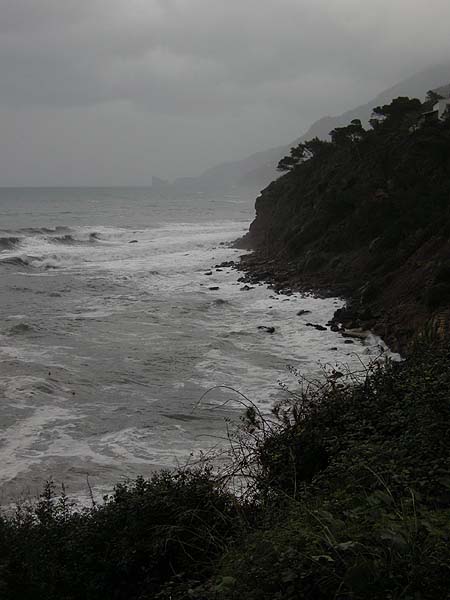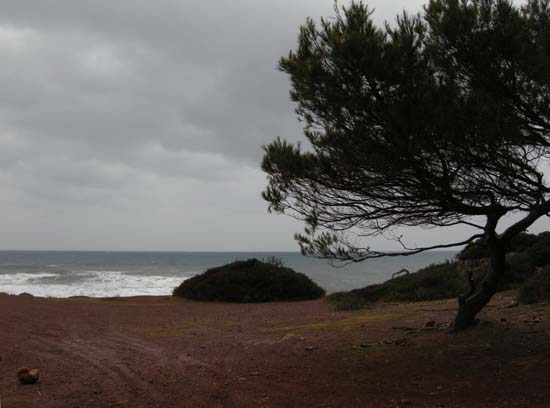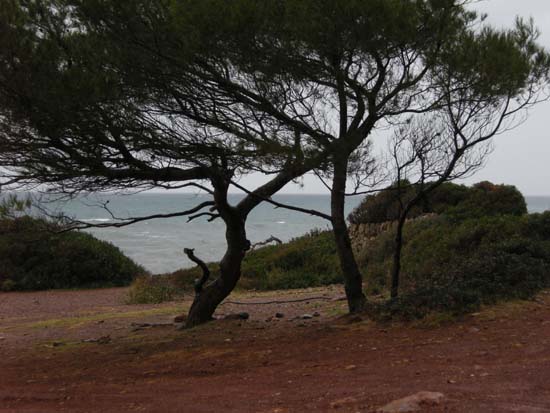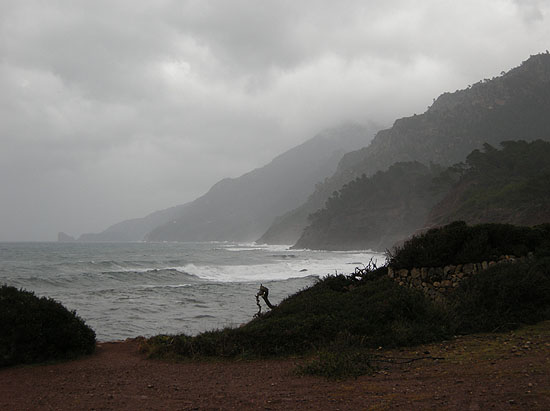Shortly after entering the Carmelites, Teresa takes on – no one else was able to do it – the care of a sister, who “…
at that time had a very great disease, and a very painful one, because she had holes in her belly so that whatever she ate immediately came out of her. She died soon afterwards. I saw that everyone was afraid of this disease, but her patience caused great envy to me. I asked God to give me such a patience, and then to give me diseases so I could serve Him.”
1 This idea is not new. Already as a child she tried to escape with his brother to the land of the Moors to suffer and die there for God.
2
Little is known before this offering about the diseases of Teresa. We know none from her childhood. At the age of sixteen she had to be taken home from the college, because of some major illness, according to her own words,
3 but they did not note down what it was. Her first disease specifically known to us is in the next year when, after terrible inner struggles, she decides to choose the monastic vocation. While she hesitates, she is repeatedly attacked by bouts of fever and fainting.
4
Since when she asks God for diseases so she could better serve Him, all her life passes among terrible illnesses and pains.
5 Shortly after her request she starts fainting again, she is diagnosed with cardiac trouble, and she is taken to a healer. This latter tries to heal her by subjecting her liver, spleen and stomach to a brutal cleaning treatment. This insane cure probably dehydrated the organism of Teresa who was finally taken home with unbearable pains, constant fever, ruined nerves, unable to eat and to sleep.

Three months later, on 15 August 1539 in the night all signs showed that she was died. Requiem was celebrated for her, and in the monastery the tomb was opened for her body. Her father, however, despite the August heat, did not let her bury. He was kneeling at the foot of her bed, he could not be torn from there, he was praying and repeating that his daughter is not dead, that she was not born to be buried in this way. Four days later Teresa started to recover consciousness. She asked why she was called back when she was already in the heaven and she saw the hell, that her father and some religious sisters, for example her friend Juana Suárez need to be saved by her help; that she saw the monasteries she would establish and what she must do for her order; the souls that would be saved through her; that she would die as a saint and before being buried, her body would be covered by a shroud of brocade. Everyone was convinced that she was delirious.
6
When she fully recovered her consciousness, she could move only one finger. All her body was completely stiff, every touch was a horrible pain, every second day she was tormented by fever. She spent eight months in this condition. Three years later she asked Saint Joseph to intercede for her healing. After that she gradually regains the ability to move. However, all her adult life was accompanied by various symptoms of paralysis. Her left hand is paralyzed from time to time, occasionally even for two years. Finally on Christmas of 1577 she breaks it irreparably: she cannot take care alone of herself any more. She has regular paralyses in her limbs for several hours, accompanied by strong pains. Her tongue is paralyzed again and again, she cannot eat and speak. She experiences these in particular during the terrible foundation of Burgos. The one thing that can help her in this condition is the Holy Communion.

These pains are associated with various other diseases. A continuous, severe headache and frequent trembling of the head. Severe pains in the jaw. Her teeth are completely ruined, causing her immense pain. Her stomach is so bad that throughout two years she vomits bile even daily. Intensive pain and palpitation in the heart. The recurrent fever remains with her throughout her life. Fainting. Ruined joints and bones. Gout. Pain in the back. Problems with the liver and kidneys. The pains gets stronger in the last years of her life. Shortly before her death, at the age of 67 a medical examination cannot determine the center of the pains, because “all the body is a repository of diseases”. Her death is caused by a very strong internal bleeding – according to a plausible hypothesis, as a last phase of a uterine metastasis.
Teresa bears all this with an incredible patience from the beginning to the end. Meanwhile she establishes two men’s and fifteen women’s monasteries which, in spite of the several waves of the terrible persecutions of church in Spain, all have survived to this day. She writes one of the most important works on mysticism of all times, and a half dozen more of outstanding books. Despite the fact that in the course of the fighting within the order many of her letters were burnt, nearly four hundred and fifty of them have been left to us. She plays a key role in the reform of the Carmelite order, probably one of the most difficult reforms of church history.
These facts are usually interpreted in three ways. It gives a very sad diagnosis on the last century that in the Catholic discourse on Teresa’s diseases almost exclusively the first two are present.

For a long time – and especially with the surge of twentieth-century science – the most popular interpretation was the one offered by psychopathology. This builds on the brilliantly simple hypothesis that on psychological grounds everything is possible, thus the physical problems of Teresa were but manifestations of various psychical problems. This seemed extremely plausible to a general public that grew up with a vulgarized Freud, for whom Teresa was but a hysteric – this word is familiar for all this trend –, neurotic, and even psychotic. This explanation has the big attraction that the mystic who resists to be fitted into theoretical or practical materialism, can be immediately filed with a specific and tangible label: psychopathology (whose experts thus, incidentally, also gain one more field where they are competent because of their science). Despite all these benefits, this kind of explanation has the problem that
not everything is possible on a psychological basis, and that a diagnosis which judges the person on one or two symptoms uprooted from the context, is a kick in the ass of psychology as a science. Because fainting, convulsion or paralysis is in fact possible in a number of psychological diseases. But each of these diseases are accompanied by typical ways of problem solving, patterns of thought, relationship to reality, stress management, stress resistance, self-concept, self-force and relationship patterns. The bulk of psychology as a science is made up by the description of them and the explanation of their relationships. Seen from this point of view – and if we want to take seriously psychology as a science, we cannot see it differently – Teresa with all her fainting, convulsions and paralysis is a quite exceptionally healthy personality, with an incredible self-force, an amazing stress resistance, an awesome sense of reality, and extraordinary conflict management skills.

Since the psychopathologic explanation is so embarrassingly weightless, the more informed usually choose the biological one. This seems much more respectful to Teresa and the whole subject, but in reality the process and its result is very similar to the previous one. The prominent representative of the science takes a couple of symptoms, on the basis of which he states that the problems of Teresa were caused, let’s say, by lung disease, or some kind of bacterial infection – the more inventive researchers even tell you exactly which bacteria. (Interestingly, these are always such diseases and bacteria, whose knowledge offers to the reader the competence and pleasant feeling of belonging to an educated public.) And while the source of their prestige is the reference to science, they generously disregard the basic scientific rule that a hypothesis must explain all the facts of a subject, and if it is unable to do so, it should be rejected. And they do so with a good reason, since in the history of Teresa’s diseases there are more than one fact – for example the paralysis which is ceased by the Communion – that
per definitionem cannot be explained on scientific grounds. According to the rules of science, one should say that such phenomena unfortunately do not belong within the sphere of competence of science. If instead of this one creates a so-called scientific explanation, this does not only mean that he is scientifically incorrect, but also that his goal is to question the existence of the supernatural. If some bacteria explain the problems of Teresa, then there is no need of any further explanation, including the eventual participation of God.

Thank God, there are a few others as well, who are not selling the apparently most marketable stuff in the various fairs of expertise, but watch in an awe the terrible secret that a six year old girl already wants to suffer and to die for God, renewing this intention at the age of twenty, and God accepts it. He takes her into the most terrible diseases, and He is with her to the very end. Thus Teresa is able to do everything. And while her body is full of inflammation, putrefaction and decomposition, she emits floral fragrance. And before taking her to all this – while they are preparing the tomb for the apparently dead Teresa –, He shows to her those works and those saved souls that will be the fruits of the suffering offered by her.
7
_______________________________________________________________
1 - Vida, 5.2 (V 5.2)
2 - Efren de la Madre Dios, O.C.D. – Otger Stegging, O. Carm.: Tiempo y vida de Santa Teresa. Biblioteca de autores cristianos. Madrid 1996. 36-37.
3 - V 3.3.
4 - V 3.7
5 - A detailed description of Teresa’s diseases and of the various attempts of explanation: Efren de la Madre Dios, O.C.D. – Otger Stegging, O. Carm.: Tiempo y vida de Santa Teresa. Biblioteca de autores cristianos. Madrid 1996. 109-134.
6 - Efren de la Madre Dios, O.C.D. – Otger Stegging, O. Carm.: Tiempo y vida de Santa Teresa. Biblioteca de autores cristianos. Madrid 1996.120.
7 - See on this: Reginald Garrigou-Lagrange, The three ages of interior life. XLIX. The life of reparation.














